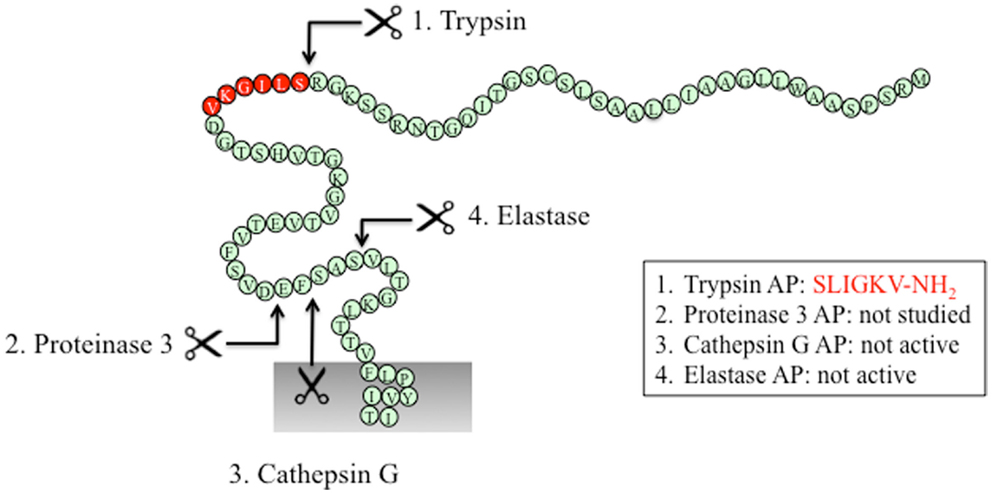Biased Signaling of Protease-Activated Receptors
- 1Monash Institute of Pharmaceutical Sciences, Parkville, VIC, Australia
- 2Department of Pharmacology, University of Melbourne, Melbourne, VIC, Australia
A corrigendum on
Figure 3 shows a snake diagram of the N-terminal amino acid sequence of human protease-activated receptor (PAR2). It indicates the sites at which different proteases cleave PAR2. These sites are correct. The error is that we accidentally repeated a sequence of amino acid residues (11–16, GAAILL) in positions 17–22 of the snake diagram. We wish to replace the snake diagram with the correct version.
This minor correction does not affect our discussion or conclusions.
Conflict of Interest Statement
The authors declare that the research was conducted in the absence of any commercial or financial relationships that could be construed as a potential conflict of interest.
Keywords: PARs, proteases, biased signaling, G proteins, β-arrestins, signal transduction
Citation: Zhao P, Metcalf M and Bunnett NW (2015) Corrigendum: Biased signaling of protease-activated receptors. Front. Endocrinol. 5:228. doi: 10.3389/fendo.2014.00228
Received: 13 November 2014; Accepted: 09 December 2014;
Published online: 06 January 2015.
Edited by:
Michael Weiss, Case Western Reserve University, USAReviewed by:
Charles Roberts, Oregon National Primate Research Center, USAMichael Lawrence, The Walter and Eliza Hall Institute of Medical Research, Australia
Copyright: © 2015 Zhao, Metcalf and Bunnett. This is an open-access article distributed under the terms of the Creative Commons Attribution License (CC BY). The use, distribution or reproduction in other forums is permitted, provided the original author(s) or licensor are credited and that the original publication in this journal is cited, in accordance with accepted academic practice. No use, distribution or reproduction is permitted which does not comply with these terms.
*Correspondence: nigel.bunnett@monash.edu
 Peishen Zhao
Peishen Zhao Matthew Metcalf
Matthew Metcalf Nigel W. Bunnett1,2*
Nigel W. Bunnett1,2*